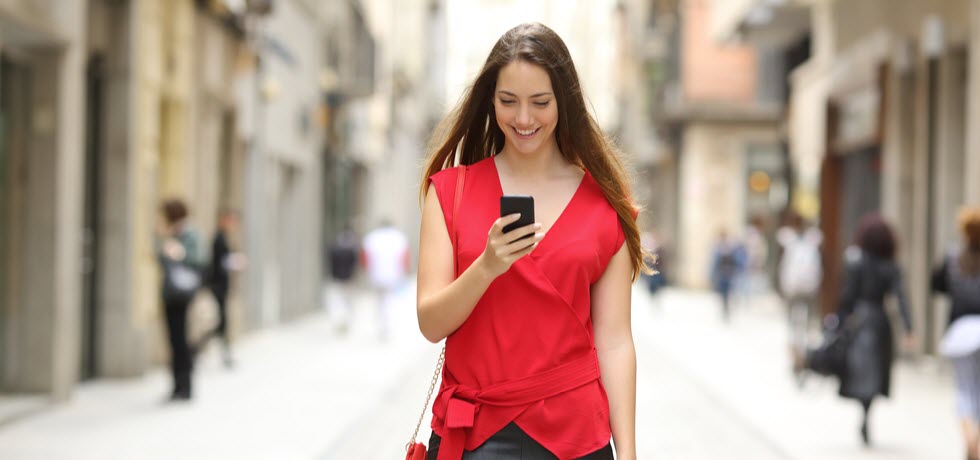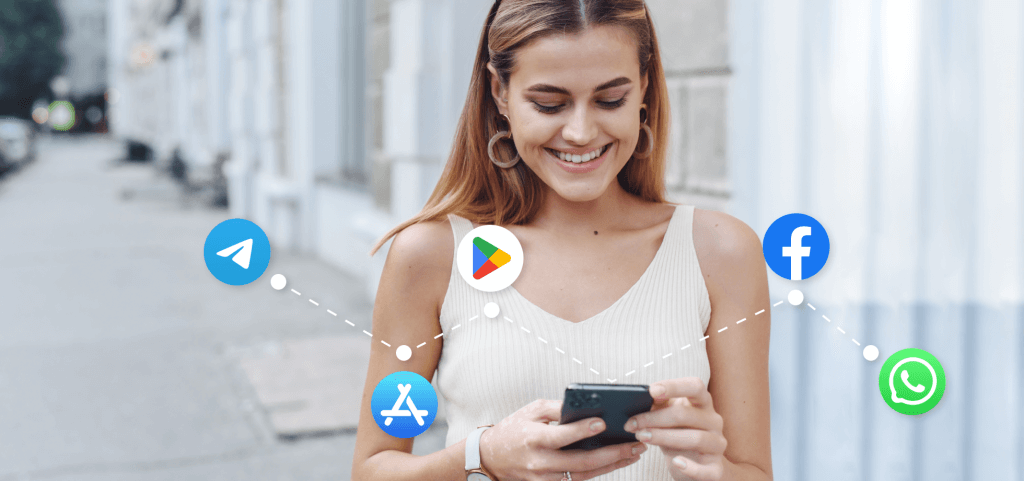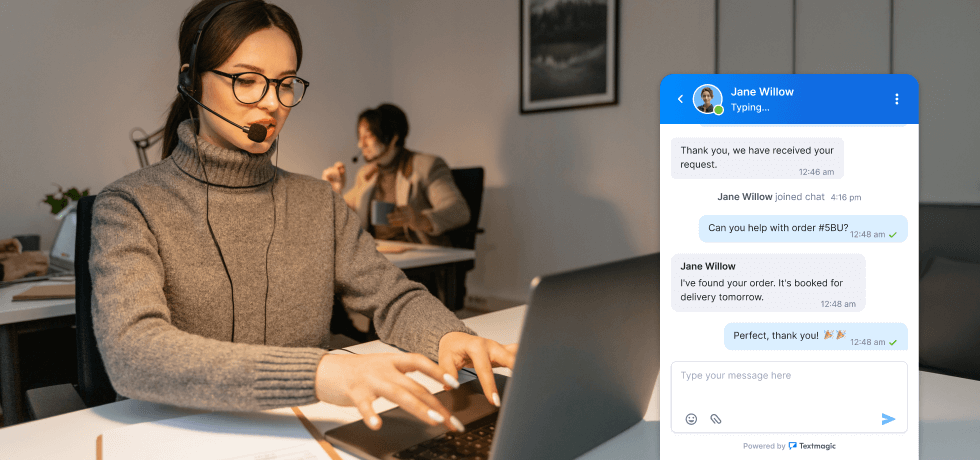
Within the time you took to check this article, over 100 thousand text messages have been received and read worldwide by individuals with and without an internet connection. This remarkable delivery rate and accessibility highlight the effectiveness of text message advertising.
Text message advertising or SMS advertising involves sending promotional or transactional text messages to a targeted audience using short messaging service technology. Due to its instantaneous and flexible nature, it is undeniably a game-changer in today’s digital marketing landscape.
Hence, leveraging text message advertising to achieve your marketing goals is important. In this article, we will explore SMS advertising: its benefits, how to get started, and best practices to help you stay on the right track.
The benefits of text messaging advertising
Here are some unique advantages of text messaging as an advertising medium:
- High open rates: Various sources report that SMS text messaging has an open rate of over 90%, surpassing email and social media communication. This stems from its convenience, as customers can receive and read your messages without the need to utilize external applications or activate a data connection.
- Personalization: SMS advertising enables businesses to interact with customers based on their touch points and preferences. You can curate your messages according to customers’ data—names, purchase histories, and demographics—creating more personalized experiences for them.
- Direct communication and immediate reach: With email inboxes and social media feeds becoming saturated with ads and generic branded content, SMS advertising allows businesses to interact with customers directly with little or no distractions.
Additionally, text messages are delivered almost immediately after they are sent. This makes SMS advertising ideal for time-sensitive promotions or notifications.
- Higher response and conversion rates: 95% of SMS are read and responded to within the first three minutes. Moreover, SMS is inherently conversational, allowing two-way communication. You can text customers, and they can reply almost immediately, facilitating engagements and increasing the likelihood of conversions.
- Affordable: Text message advertising costs are generally lower than other advertising channels. Thus making it a cost-effective method for businesses of all sizes to communicate with customers.
- Positive return on investment: In a recent report by Attentive, over 50% of marketers surveyed say SMS is part of their top three revenue-driving channels and plan to increase their SMS marketing budget in 2023. This emphasizes the effectiveness of SMS text messaging advertising and its capacity to grow your business revenue.

Getting started with SMS advertising
It is already established that SMS advertising can significantly improve your business communication. Now, here are practical steps and tips to get started:
1. Select a reliable text messaging platform or service provider
Your choice of SMS advertising software can make or break your campaigns. So, it is important to select one that is reliable and efficient. Start by researching different text messaging platforms on the market and note your top picks.
Then, assess each SMS advertising service provider based on key factors, such as:
- Delivery rates
- Cost
- User-friendliness
- Compliance with regional and industry regulations
- Scalability
- Analytics and Reporting
- Other functionalities
Afterward, narrow down your list to fewer options and select one provider that meets your business needs. A bonus tip would be choosing a service that allows you to test SMS marketing features for free before committing to a paid subscription.
2. Build a permission-based subscriber list
Obtaining explicit consent from individuals before sending them text messages is crucial. Besides, you can offer incentives (that will pique recipients’ interest) in exchange for their consent. It could be discounts, free tickets, or free deliveries for a specific period.
Whatever the case, ensure potential and existing customers give you their full permission to contact them via text messages to avoid being caught in a legal crossfire.
3. Create compelling content for messages
Your text message content is the crux of your SMS marketing campaigns. Hence, you have to count every word. Use clear, actionable language to convey your message, creating a sense of urgency to encourage immediate action.
4. Segment your audience
Use subscribers’ data to segment your audience based on demographics, preferences, and past interactions. This will enable you to streamline your SMS marketing campaigns and create more personalized experiences for recipients.
5. Activate your SMS marketing campaign
With your SMS marketing software, segmented list, and subscribers’ consent, you can now curate your text messages (promotional or transactional) and send them to designated recipients. You can also leverage the automation feature of your SMS advertising platform to send text messages at scale.
Key strategies for successful text message advertising
Below are essential strategies to implement when creating your mobile SMS advertising campaigns:
1. Personalization
Although text message marketing allows you to communicate with thousands of subscribers simultaneously, you still want to ensure your messages feel personal to each recipient. The reason is that personalization increases customer loyalty and revenue by 10 to 15%, according to McKinsey and Company.
The best way to do this is to segment your subscriber list based on location, preference, age, gender, and other relevant metrics. Then, tailor your content accordingly to fit each group with one or more similarities.
2. Timing
As far as business communications are concerned, it is unwise to send messages to customers at any time. It can come off as intrusive. Thus, consider your target audience’s daily routines and time zones, and learn to schedule your messages accordingly.
Generally, don’t send texts before 9 am or after 9 pm. You can also utilize A/B testing to determine the optimal timing for your specific audience. This can greatly impact your response rates.
3. Include a clear call-to-action
A call-to-action tells readers what to do after consuming your text message content. Hence, endeavor to keep it clear and direct. You can ask recipients to visit your website, participate in a survey, or take any desired action.
Most importantly, use actionable words and create a sense of importance or urgency to prompt the reader to take action.
4. Craft targeted messages
Given that most people have short attention spans, sending messages that resonate with them is important to capture their attention quickly. Tailor your text messages to their specific pain points and interests to drive engagement and increase conversions.
Also, refrain from using slang and abbreviations. As much as you want to be cordial, keep it professional. Furthermore, use catchy headlines to entice recipients to open the message, read it, and do the needful.
5. Track and measure your campaign
Don’t throw caution to the wind when developing and deploying your SMS marketing campaigns. Evaluating them based on key metrics, such as open, read, click-through, conversion, and response rates, is necessary.
Fortunately, you can leverage the analytical tools provided by your proposed text message advertising software. Doing so enables you to:
- Gain detailed insights into the overall performance of your campaigns.
- Identify specific areas that need improvements.
- Determine if the investment in SMS marketing is worthwhile by comparing the cost of the campaign to the revenue generated within a particular time frame.
- Discover new market trends and patterns to drive business growth.

Compliance and best practices
SMS is a regulated communication model with rules and requirements per industry and region. Therefore, before you begin your marketing campaigns, you must familiarize yourself with the best practices for SMS compliance in your industry and locale.
Moreover, complying with relevant regulations and guidelines—such as obtaining proper consent and providing opt-out options—enables you to build trust with recipients. When you prioritize customers’ privacy, they’re confident you have their best interests at heart. It also saves your business from a lot of legal issues.
On that note, below are some best practices for maintaining a healthy and engaged subscriber list:
- Permission reconfirmation: Regularly confirm recipients’ permission or consent to ensure they still want to receive your text messages.
- Provide a clear opt-out process: Subscribers can withdraw their consent at any time, so it is essential to provide a clear opt-out procedure. The easiest way is to include opt-out instructions in your messages. When they opt out, endeavor to grant their request without hesitation and cease sending them messages.
- Automate messages: One of the best texting practices is to automate responses to keep the conversation moving. Customers want to feel involved and respected. If they respond, have a text ready to send them again.
- Honest messaging: Be transparent about the purpose and content of your text messages. Avoid using misleading headlines or sending messages that go against text message advertising laws in your region.
- Message frequency: Maintain appropriate messaging frequency to avoid overwhelming recipients.
The future of text messaging advertising
The future of text messaging advertising is shaped by diverse emerging trends and technologies, such as Rich Communication Services (RCS) and Chatbots. These advancements provide new opportunities for businesses to engage with their audience. Let’s quickly explore these trends and the challenges in the text messaging advertising landscape.
- Rich Communication Services: RCS messaging is a modernized version of SMS messaging that incorporates features from texting apps like iMessage and WhatsApp. These features include read receipts, typing notifications, GIFs, and high-quality multimedia, to mention a few. The RCS trend allows businesses to create more personalized and interactive text messaging experiences for customers via SMS technology.
- Chatbots: Chatbots are fast becoming the future of customer service due to their advanced natural language processing capabilities. They facilitate automated, interactive conversations, providing instant support when necessary. Chatbots can also provide personalized recommendations, answer common queries, and improve customer self-service experience.
- Integration with other marketing channels: While text messaging can function independently, integrating it with other marketing channels (email and social media) can change the status quo.
This is because omni or cross-channel adoption creates more cohesive and consistent customer experiences. For example, you can send a promotional text message with a link to your company’s website or any social media platform where customers can further engage with your brand.
Furthermore, with many text message advertising platforms providing integration functionalities, you can be confident of seeing more SMS integrations with other marketing channels in the near future.
While the future of text messaging advertising holds significant potential, it has challenges. Here are some of them:
- Seeking permission: The law requires companies to get explicit customer consent before sending messages. So, businesses have to offer incentives to encourage customers to opt-in. Otherwise, there may be no text message advertising.
- Message length: The 160-character length for text messages is standard and doesn’t seem like it’s going to change anytime soon. Consequently, this can prevent businesses from expanding on specific information in their marketing messages.
- Privacy concerns: Given that companies need customers’ data to facilitate personalized messaging, most may find it hard to balance providing customized messaging and ensuring user privacy.
- SMS overload: With SMS text messaging making waves and multiple brands vying for customers’ attention, there’s a risk of overwhelming consumers with text messages.
Conclusion
According to a recent survey conducted by Reviews.org, individuals check their phones up over 100 times per day. This shows that the world is rapidly becoming mobile-centric. Conversely, text messaging offers unique opportunities to facilitate business-to-customer mobile communications.
Hence, we strongly advise integrating text message advertising into your marketing strategy. Leverage the convenience, wide reach, and high open rates of text messaging to enhance customer engagement and drive meaningful results. You’re one message away from positioning your business at the forefront of consumer interactions.
Textmagic provides businesses with a powerful platform for text message advertising, enabling them to reach their target audience effectively and drive results. By leveraging the benefits of SMS advertising with our platform, businesses can elevate their marketing strategies, boost customer engagement, and achieve their business goals in today’s mobile-centric world.
Frequently Asked Questions (FAQs)
Direct and short-term messaging tactics focus on brief, urgent content that gets people to act fast. Examples include SMS advertising campaigns, flash sales, push alerts, and limited-time offers.
First, you need a list of contacts who have explicitly agreed to receive marketing communications from your company.
Then, draft a message that clearly explains your offer and motivates your audience to respond.
Lastly, you can use texting platforms like Textmagic to upload your contact list, personalize your messages, send campaigns, and track delivery reports.
A major drawback is that SMS messages have a strict character limit, usually 160 characters.
This makes it challenging to provide all the details or emotional appeal you might want in your message.
Most marketing messages include the option to unsubscribe by replying with keywords like “STOP”.
This method automatically removes you from their contact list. You can also find an unsubscribe link in some messages that direct you to opt out online.
Related articles
How to promote your mobile app: A comprehensive guide to captivating mobile users
In a world where thousands of apps are released dail...
What is UCaaS (Unified Communications-as-a-Service)?
Unified Communications as a Service (UCaaS) has tran...
How to use concept maps to organize complex ideas (plus free templates)
From marketing strategies to customer service workfl...
Why is CPaaS a game-changer for A2P messaging?
In today’s dynamic business ecosystem, keeping...
7 Ways small teams stay organized and responsive with Textmagic
If you run a small business, you’re probably j...




